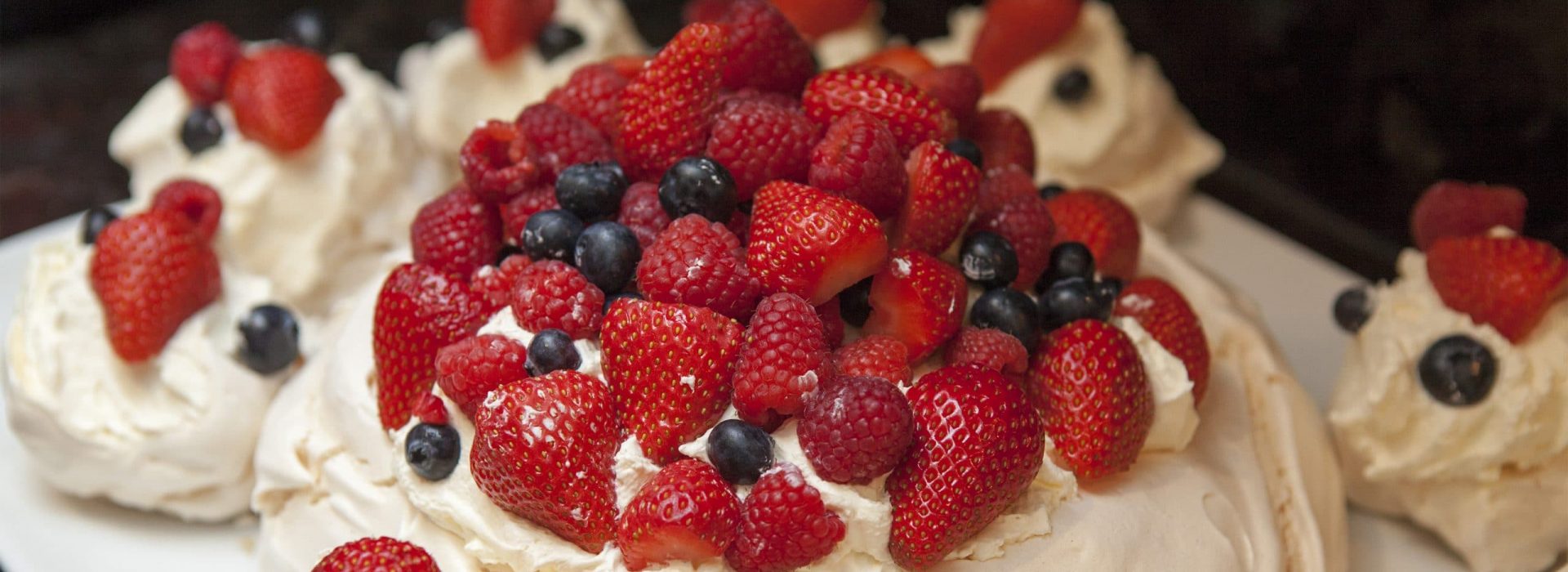Key Pavlova Cake Facts to Dominate a Century-Old Dessert Debate
Hands down, ask anyone; my all-time favourite dessert is the Pavlova dessert, or Pavlova Cake, as some people call it. Has been since I was a kid, and will continue to be so until I’m six feet under pushing up the daisies. Did I just hear crickets and see a tumbleweed blow across the road? Fair enough. That’s the reaction I get sometimes, so I figured the time was ripe for a Pavlova dessert education.
What Is It?
A summertime classic in the southern hemisphere, “The Pav” as we affectionately call it, makes for an epic table centerpiece at any gathering. It’s basically a big, gooey-centered meringue, made complete with generous dollops of fresh cream. This is then decorated by all of your favourite fruits. Personally, I’m a fan of the old mango, peach, passionfruit and cherry combination.It’s quite entertaining to watch your grandma find a big knife and cut into it. I say grandma because grandpas can be a tad shy sometimes. They tend to avoid the attention normally associated with the dramatic act. This is wise as the action sets off an avalanche of fruit and cream cascading down the side of the massive meringue.
The drama of it all makes sense when you find out it was named after a Russian ballerina, Anna Pavlova. A woman who toured the world during the 20s, and whose name inadvertently became the source of much rivalry between Australia and New Zealand. A debate that still stands today. You see, both countries can’t seem to make up their minds as to who actually invented the dessert. Australians tell their kids the answer is Oz, while New Zealanders tell their kids it’s NZ. For the longest time I didn’t even care; as long as I had a piece of cutlery to eat it with, it could have come from the moon.
Where Does It Come From?
According to culinary anthropologist, Prof. Helen Leach, it does not come from the moon. She can find “…at least 21 pavlova recipes in New Zealand cookbooks by 1940, which was the year the first Australian ones appeared.” Downtrodden, I mulled this over for a while before discovering an article by gastronomic researcher, Dr Michael Symons. He looks at everything a little differently. His findings reveal the earliest reference of anything vaguely resembling the pavlova came from an Australian cookbook in 1922. But with the recipe name, “Meringue with Fruit Filling”. Does this mean the pavlova dessert originated in Australia then? Or, if the ballerina toured and Kiwis started naming meringues after her, does this mean New Zealand invented the dessert?
Some Theories
Dr Andrew Paul Wood and Annabelle Utrecht, also tortured by the uncertainty, decided to invest two years researching the origins of our beloved pavlova cake. Their research takes us all the way back to the 15th century. Here the German-speaking Habsburgs enjoyed a variation of the pav called Spanische Windtorte. Later, German immigrants brought other meringue variations, the schaum torte and baiser torte, to the US where the popularity of meringue desserts grew thanks to the introduction of the Dover egg beater. Finally, it was the exportation of William Duryea’s maizena, a brand of cornstarch, which did it. The key ingredient reached New Zealand’s shores in the 1980s and included a pav-type recipe on the side of the box!
Interestingly, Symons’ research goes on to describe the social invention and construction of the pavlova dessert. He weighs in on the debate by acknowledging the complex process in which societies everywhere invent, name, and share experiences like the creation of desserts. But what can I take away from all of this? Firstly, Anna Pavlova must have been one impressive lady to have multiple dishes named after her. This includes a French recipe for frogs legs a la Pavlova! Secondly, I must agree with Dr Wood, “It doesn’t matter what we say, the pav is so built into the psyche of the two nations that you can’t remove it and of course you wouldn’t want to.” Finally, the way I see it, I’ve burned some calories researching the origins of my favourite Pavlova cake. It’s only right that I replenish the stocks.
Bon appetit!





